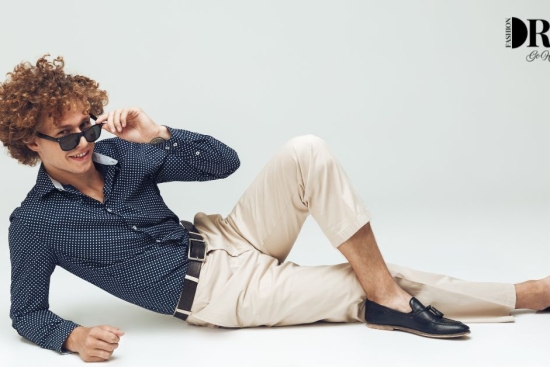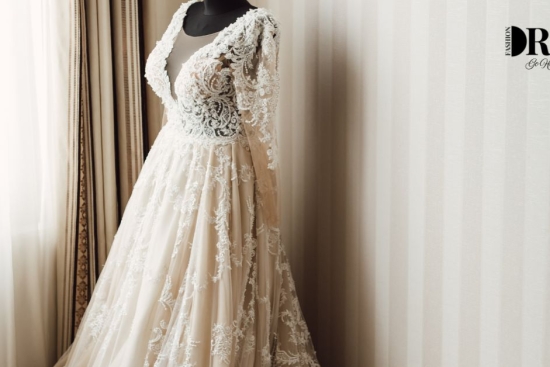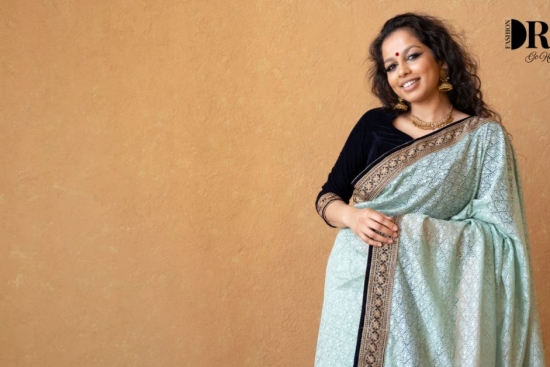
When it comes to personal style, nothing beats perfectly fitted trousers. Whether it’s for the office, a wedding, a date night, or just day-to-day wear, trousers that fit right can elevate your confidence and enhance your overall look. Yet, buying the perfect pair off-the-rack is rare. Most trousers need a little tweaking here and there to match your body shape precisely. This is where trouser alterations come into play. In this comprehensive guide, we’ll take a deep dive into everything you need to know about altering trousers so they fit like they were tailored just for you.
Why Trouser Fit Matters
Getting the right fit in trousers goes beyond aesthetics. It significantly affects your comfort and mobility throughout the day. A perfect fit ensures that you can move freely without feeling restricted or worrying about wardrobe malfunctions. It also reflects attention to detail and boosts your overall appearance, making even basic outfits look polished and professional. Investing time in tailoring can truly transform your look.

A pair of well-fitted trousers can make all the difference in how you feel and how others perceive you. Ill-fitting trousers, on the other hand, can make even the most stylish outfit look sloppy.
Fit affects posture, silhouette, and confidence. If your trousers are too loose, you look unpolished. If they’re too tight, you might feel uncomfortable or restricted. Tailoring them properly ensures that they drape well, enhance your body shape, and allow easy movement.
Common Trouser Fit Issues
Trouser fit issues can vary widely depending on your body type and the style of trousers. Common problems include a waistband that digs in or gaps, thighs that feel too tight or too loose, and legs that either billow out or cling awkwardly. Recognizing these issues is the first step toward fixing them. A few small adjustments can dramatically improve how your trousers look and feel.
Before diving into the alteration process, let’s first understand some typical trouser fit problems:
- Waist too tight or too loose
- Excess fabric in the seat area
- Baggy or tight thighs
- Improper inseam length
- Pants bunching at the ankles
- Unflattering rise (high-rise or low-rise)
These are all fixable with the right techniques. The goal is to customize the trousers to fit your unique shape and preferences.
Tools You Need For Altering Trousers
Having the right tools makes trouser alterations more accurate and less stressful. Basic sewing equipment like a seam ripper, scissors, and a measuring tape can go a long way in helping you achieve a clean, professional finish. Investing in a sewing machine can speed up the process and make your stitches more durable. Don’t forget an iron—pressing your seams ensures a sharp, polished result.
Altering trousers can be done professionally or at home if you have basic sewing skills. Here are the essential tools you’ll need:
- Seam ripper
- Measuring tape
- Tailor’s chalk or fabric marker
- Pins
- Sharp fabric scissors
- Sewing machine or hand sewing needle
- Iron and ironing board
- Thread matching your trousers’ color
Understanding Trouser Measurements
Before making any alterations, it’s essential to understand how to measure trousers correctly. Proper measurements ensure that changes you make will enhance the fit rather than compromise it. Focus on key areas such as waist, inseam, and thigh width to achieve a balanced look. Measuring also helps you maintain symmetry between both legs, especially when tapering or adjusting length.
Before you start altering, you need accurate measurements. Here’s how to measure trousers properly:
- Waist: Measure around your natural waistline.
- Inseam: Measure from the crotch to the bottom of the pants leg.
- Outseam: Measure from the waistband to the bottom hem.
- Rise: Measure from the crotch to the top of the waistband.
- Thigh width: Measure the width of the thigh area while laying flat.
- Leg opening: Measure across the bottom hem.
These numbers are crucial to ensure a tailored fit that’s neither too loose nor restrictive.
Altering Waist Size
One of the most common and impactful alterations is adjusting the waist size. Whether you’re taking in or letting out the waistband, a properly fitted waistline can greatly improve comfort and aesthetics. This is often the first area people notice when trousers don’t fit properly. Taking the time to get it right ensures that your trousers sit securely without needing a belt to compensate for poor fit.

One of the most common issues is a waist that doesn’t fit right. Here’s how to alter the waistline:
Taking In The Waist
- Turn the trousers inside out.
- Unpick the waistband and side seams or center back seam.
- Pin the fabric to take in the desired amount.
- Sew the seam again using a sewing machine.
- Trim the excess fabric and reattach the waistband.
Letting Out The Waist
- Check for extra fabric in the seams (seam allowance).
- Carefully unpick the seams and waistband.
- Let out the necessary amount.
- Re-sew and reattach the waistband.
Pro Tip: Don’t alter more than 2 inches from the waist to maintain the trousers’ proportions.
Adjusting Trouser Length (Inseam)
The length of your trousers can dramatically affect your appearance. Too short, and they look awkward; too long, and they bunch unattractively around your ankles. Adjusting the inseam ensures that the trousers fall just right over your shoes, offering a neat and refined silhouette. It’s a relatively simple alteration that can instantly upgrade your style.
The length of your trousers is another critical aspect of the perfect fit. Too long, and they bunch up at the bottom; too short, and they look awkward.
Shortening the Inseam
- Try the trousers on with the shoes you intend to wear.
- Fold the fabric inside to your desired length and pin.
- Remove the trousers, measure, and mark the fold evenly.
- Cut off excess fabric, leaving 1 inch for hemming.
- Iron the hem and sew using a straight stitch or blind hem.
Lengthening the Inseam
- Check if there’s extra fabric in the original hem.
- Unpick the existing hem carefully.
- Re-hem at the new desired length.
Note: Some trousers may not have extra fabric, which limits the ability to lengthen.
Tapering the Legs
Modern fashion trends often favor a more tapered fit, especially around the calves and ankles. Tapering your trouser legs can give you a slimmer, more flattering silhouette without compromising comfort. This adjustment works well for both casual and formal styles, adding a contemporary edge to your wardrobe. It also helps your trousers pair better with a wider variety of footwear.
Modern styles often call for tapered legs. This means the leg width narrows as it moves toward the ankle. Tapering gives trousers a sleeker and more updated look.
- Turn trousers inside out and put them on.
- Pin along the sides where you want the taper to start (usually from the knee down).
- Mark and remove trousers.
- Sew along the pinned line using a sewing machine.
- Trim the excess fabric and finish the raw edges with a zigzag stitch or serger.
Reshaping the Seat and Thighs
The seat and thigh areas are crucial for comfort and fit. If there’s too much fabric, trousers can look saggy and ill-fitting. Conversely, if they’re too tight, they restrict movement and feel uncomfortable. Reshaping these areas gives a more tailored and flattering look, making the trousers feel as if they were custom-made for you. It’s all about balancing aesthetics with ease of movement.
Too much fabric in the seat or thighs can make trousers look saggy or bulky. To reshape these areas:
- Identify if you need to take in or let out the seat area.
- Unpick the back seam and adjust accordingly.
- For thighs, taper the inner and outer seams slightly.
- Sew back together and try on for fit.

This can be a bit advanced, so if you’re unsure, consider visiting a professional tailor.
Fixing the Rise
The rise determines how high or low your trousers sit on your waist and has a big impact on both comfort and style. A rise that’s too high can feel old-fashioned or restrictive, while a low rise might cause discomfort when sitting or bending. Fixing the rise is a more complex alteration but can drastically improve how your trousers feel and look when worn. This change is especially beneficial for achieving a modern, clean fit.
The rise is the distance from the crotch to the waistband. It determines how high the trousers sit on your waist. An uncomfortable rise can be restrictive or saggy.
Unfortunately, altering the rise is complex and often involves dismantling the waistband and crotch seam. It’s best left to experienced tailors, especially if significant changes are needed.
Altering Pleated vs Flat-Front Trousers
Pleated and flat-front trousers each have unique tailoring requirements. Pleats can add extra room and style but must be adjusted carefully to keep symmetry intact. Flat-front trousers, being simpler in design, are usually easier to alter and offer a cleaner look. Knowing which type you have will guide how you approach alterations and help you avoid distorting the trousers’ original design.
Pleated trousers have extra fabric folds that affect how alterations are done.
- When altering pleated trousers, ensure the pleats remain symmetrical.
- Flat-front trousers are easier to adjust, especially around the waist and seat.
Always pin and try on before finalizing the stitching.
Tips For DIY Trouser Alterations
Doing your own alterations can be rewarding and cost-effective. Start with simple changes like hemming or waist adjustments before moving to more complex tasks. Always double-check your measurements and use temporary stitches for the initial fit test. With practice and patience, DIY tailoring can become a valuable skill, giving you more control over your wardrobe.
If you’re planning to alter trousers at home, keep these tips in mind:
- Always test your stitches on scrap fabric first.
- Use matching thread for a clean, professional finish.
- Iron your seams as you go to get crisp results.
- If unsure, use temporary stitches and try on before final sewing.
When To See A Professional Tailor
While many minor adjustments can be done at home, some changes are best left to professionals. Tailors have the expertise and tools to handle complicated alterations like adjusting the rise or tapering lined trousers. They can also offer valuable advice on what will work best for your body shape. If you’re altering expensive or formal wear, investing in a professional’s touch is worth it.
While DIY is great, some alterations are best done by a pro:
- Changing the rise
- Complex tapering
- Formal trousers or suits
- Trousers with linings or unique materials
A skilled tailor will ensure a flawless finish, preserving the garment’s integrity.
Caring For Your Altered Trousers
Proper care extends the life and quality of your altered trousers. Always follow the care instructions on the label and try to avoid overwashing. Hang trousers properly to prevent wrinkles and shape loss. Using a steamer instead of an iron can help maintain the integrity of the seams. Thoughtful maintenance ensures your tailored fit stays perfect over time.
Once altered, care for your trousers properly to maintain their fit:
- Follow fabric care labels strictly.
- Avoid frequent washing to prevent fabric shrinkage.
- Steam instead of iron to preserve shape.
- Store them using quality hangers.
Good maintenance extends the lifespan of both the fabric and alterations.
Conclusion: Master the Fit, Master Your Style
Altering your trousers can seem daunting at first, but with the right knowledge and tools, it becomes a valuable skill. Whether you’re doing it yourself or heading to a tailor, understanding what makes trousers fit well is the key to elevating your style. A perfect fit isn’t just about looks — it’s about how you feel when you wear your clothes. Start with small tweaks, gain confidence, and soon you’ll have a wardrobe filled with trousers that feel like they were custom made.
So go ahead — grab those slightly-too-long or too-tight trousers sitting in your closet and give them the makeover they deserve. Your perfect fit awaits!





